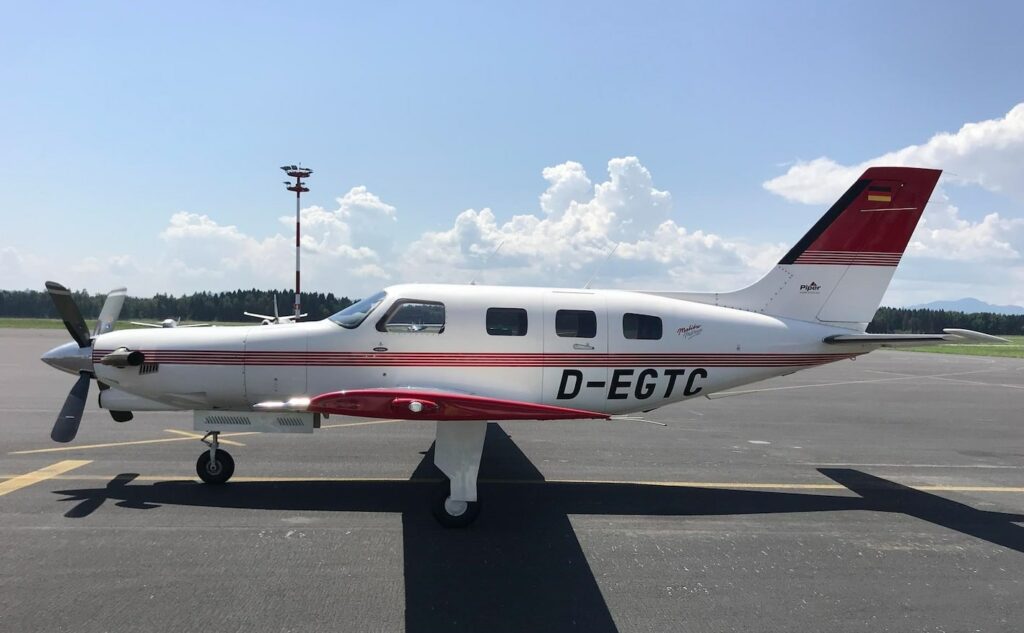By Vincent Wigmans
The Piper PA-46 sets the standard in its class for efficient operations, value and freedom. The aircraft is powered by a single engine and has the capacity for one pilot and five passengers. The outstanding performances, operational versatility and proven reliability records, the PA-46 is a great ownership prospect for any buyer. But if you want to buy one, you see two types on the after-market, the Piper PA46 Meridian and the Piper Jetprop. But what are the main differences between these two? While these two models are singularly exceptional, there are some key differences.
Meridian vs Jetprop: similarities?
The Piper Jetprop was introduced in the late 1990s and was a commercial success. This model is in fact the result of the installation of a Supplemental Type Certificate or “STC” (document issued by the FAA confirming the authorization to modify an aircraft or aircraft equipment) which applies to the PA-46 piston (Piper Malibu or Piper Malibu Mirage). The piston engine was removed, along with most of the front firewall and a Pratt & Whitney PT6 turboprop was installed. The result is an increase in flight level and speed.
The exceptional performance of the Jetprop motivated Piper Aircraft. They intensified their research and development and came in November 2000 with the Piper Meridian.
These two models offer the same cabin size, the same cruising speed (260 KTAS) and the same flight level (both can climb to FL270 from a sea-level airport in about 20 minutes). Finally, their acquisition cost is similar for models equipped in an equivalent way.

Meridian vs Jetprop: the differences
The differences between the two aircraft reside on three elements: the systems, the engine and the weight/range.
Since the Jetprop is a conversion, some systems heavily depend on the original Piper Malibu or Piper Malibu Mirage systems, systems that can sometimes be complex, older, and require a more experienced pilot. With the Meridian, Piper wanted to make an airplane that was easy for the pilot to manage, with systems requiring little or no management at all: the fuel system for instance required no pilot intervention and safety was therefore improved.
Another difference concerns the door against icing or “ice door”, absent from the Piper Meridian. Consequently, this protection is always activated or “ON”, which increases its fuel consumption in climb and cruise.
The engine and fuel consumption are also showing a difference. Here, the Piper Jetprop is the “winner”. Indeed, in order to achieve the performance of a turboprop, the Piper Meridian has a PT6-42A engine, which is derived from a larger engine series than the PT6-34 / PT6-35 found in the Piper JetProp. The Meridian therefore consumes more fuel than the Jetprop, especially at low altitude. (Meridian 40 gal/hr vs Jetprop 32 gal/hr) Next to this is the Piper Jetprop quieter than the Piper Meridian, both on the ground as in the air.
Both aircraft have limits on weight and range, the Piper Jetprop uses less fuel, so it has a slightly better range, the Meridians received from 2003 (and on) a gross weight increase (from 4.850 to 5.092 pounds). The Meridians before 2003 can install a gross weight modification but this will cost around $60k. With a gross weight modification, the Meridian will have a better payload than the Jetprop with full fuel. Due to this gross weight increase operators of a Meridian will pay most of the time a higher cost to Eurocontrol as they are above 2000kg. Big advantage of the Jetprop is the forward baggage area which can easily carry a golf bag.

What to choose?
The choice is yours: if you want a factory aircraft, which has not been modified by an STC, then the Meridian is for you. On the contrary, if you prefer the efficiency of a turboprop and do not mind being the owner of a modified aircraft that cost less, then the Jetprop may be considered.
In conclusion, whatever your decision is, it will always be the right one: the Piper Meridian and the Piper Jetprop are two exceptional aircraft that have been designed for owners who seek reliability and power.
Interested in becoming the owner of a Piper PA-46 Turboprop? Check out our listing page. Do you want to generate a Return of Investment on your Piper PA-46? Check then our Air Taxi division.
If you are planning to buy a Piper PA-46 and you need assistance, contact us at sales@faaircraftsales.com. You can also call us on +31 (0)15 820 0999.